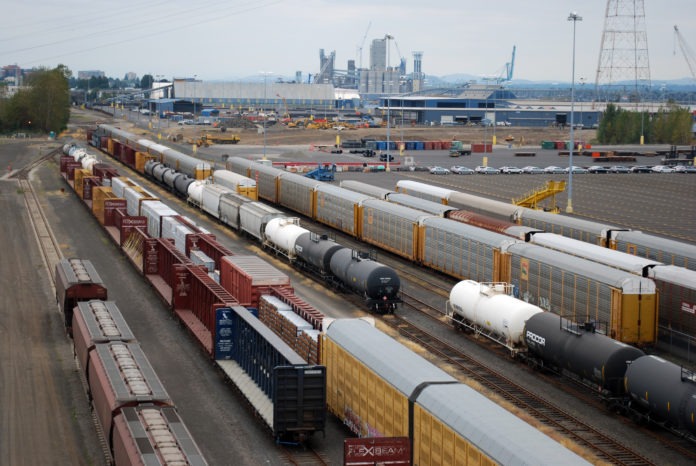A new report that estimates the short- and long-term socioeconomic impact of the proposed Vancouver Energy project at the Port of Vancouver is now in the hands of the Washington State Energy Facility Site Evaluation Council (EFSEC).
The report, which EFSEC will review in conjunction with its own analysis as it evaluates the proposed crude-by-rail uploading and marine loading facility, was conducted independently by Analysis Group Inc. (AGI) on behalf of Tesoro Savage Petroleum Terminal LLC.
“This is an update to what was in the [EFSEC] application over a year ago,” explained Vancouver Energy General Manager and Vice President Jared Larrabee. “The costs have changed a fair amount, all of which have been announced publicly, but as a result we felt like we needed a revision to the economic impact study.”
To date, AGI’s report is not only the most current economic analysis of the project, it’s also the most detailed.
According to AGI executives Todd Schatzki and Bruce Strombom, the report measures the project’s potential impact over a 16-year period. That would include construction phases, the initial 10-year lease at the Port of Vancouver and an assumed five-year lease extension. The report estimates not only the direct economic impact of the project’s construction and operations, but also its indirect impact (the project’s ripple effect throughout the economy) and induced impact (income earned by workers linked to the project and spent in the economy).
Among the report’s findings:
- An average of more than 1,000 jobs (direct, indirect and induced) would be generated by the project annually.
- $1.6 billion in labor income (adjusted for inflation) would be generated over the 16-year construction and operation period.
- The project is expected to have a one-time tax impact of more than $22 million to state and local government during construction.
- A $7.8 million annual tax impact is estimated once the project is operating at full capacity.
Vancouver Energy also provided AGI with revised on-site job numbers, which reveal plans for 91 full-time jobs at the Port of Vancouver facility during the start-up phase. At full build-out, employment swells to 176 full-time jobs – not 120 jobs as had been previously reported by the company.
“There were some [jobs] that in the interest of being conservative we had not included in [the previous economic impact study], so we’ve added some of those back into the analysis and we’ve looked at a few other positions that we think are potentially needed as well,” said Larrabee.
“It’s really just the next phase of being more iterative and [determining] what it is going to take to deliver this project,” he added.
Though AGI’s report focuses solely on the economic side of the crude-by-rail uploading and marine loading facility, many of the project’s critics are more worried about safety.
Speaking to that concern, Larrabee said, “We still need to continue to focus on safety. We need to make sure the terminal is built and can operate in a way that is safe and environmentally responsible.”
Survey: ‘Likely voters’ approve of proposed crude oil facility
A pair of surveys conducted in June by Portland-based DHM Research related to the issue of oil trains and the proposed Tesoro/Savage Vancouver Energy project at the Port of Vancouver revealed the majority of likely voters are in favor of the project.
Respondents in both surveys (one was statewide, the other within Clark County) were asked whether they favored or opposed the proposal to build a facility at the Port of Vancouver to transport crude oil. On a statewide basis, voters favored the proposal by a 64 percent to 29 percent margin. Within Clark County, the proposed project was favored by 69 percent and opposed by 26 percent.
When asked if they believed that crude oil can be safely transported by trains, 74 percent of participants in the statewide survey felt that it could be, compared to 19 percent that did not. Within Clark County, 72 percent of respondents said that crude oil could be safely transported by train, while 20 percent said it could not.
The sample for the statewide survey was 500; and for Clark County the sample was 400. DHM Research defines a ‘likely voter’ as one who has voted in at least two of the last four primary or general elections in Washington. The overall margin of error for the statewide survey was +/- 4.4 percent; and for the Clark County survey the margin of error was +/- 4.8 percent.
Image courtesy Port of Vancouver USA









